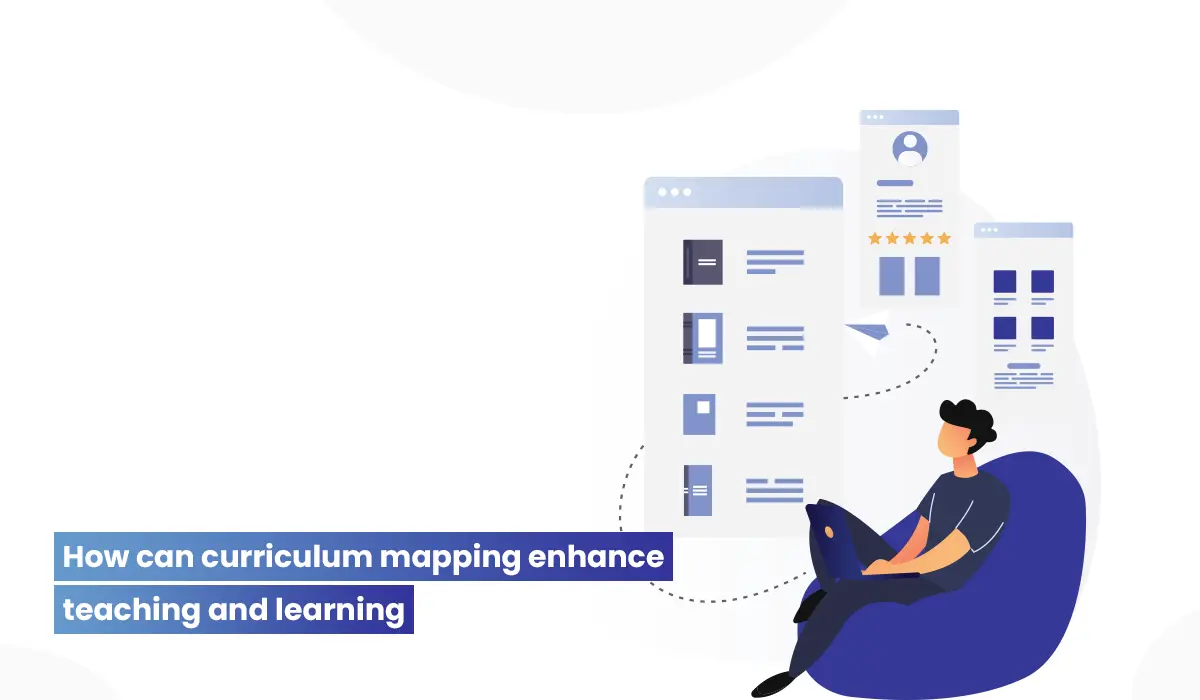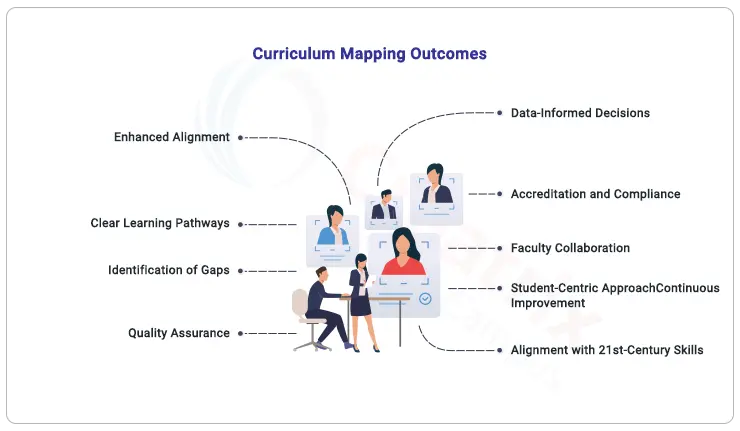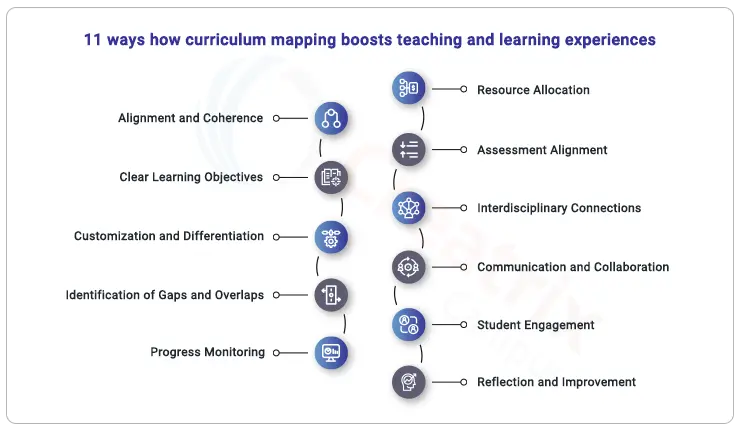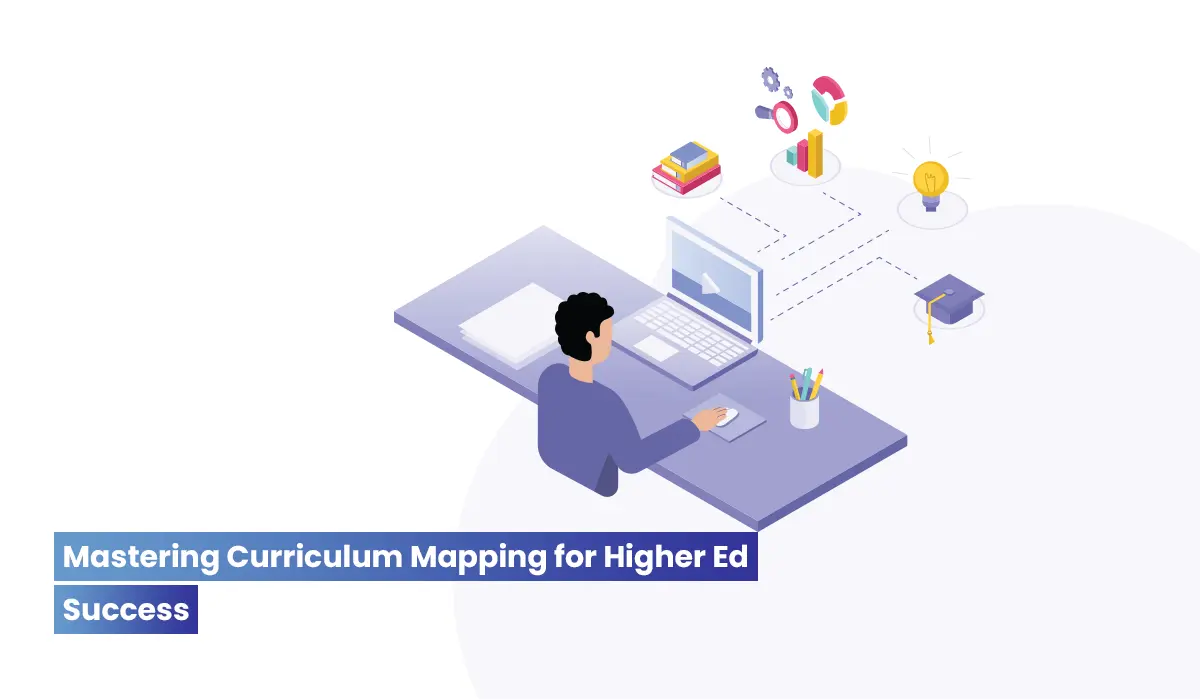Unlocking Better Teaching & Learning: The Power of Curriculum Mapping in Higher Education

Due to the increasing demand for online education in today's world, a vast majority of leaders in higher education have come to recognize the significance of adopting online course delivery methods in order to attract a larger student body. While numerous universities are proficiently offering programs of high quality to bolster their enrollment figures, the strategic aspect of equipping students with competence and skills has often been overlooked. This gap can be bridged through the implementation of curriculum mapping, a pivotal process.

Curriculum mapping benefits involve the harmonization of resources, activities, assessments, instructional methods, and other facets of learning within educational institutions. Streamlined and user-friendly curriculum mapping tools, including curriculum management software, serve to pinpoint areas of redundancy in the curriculum's study units. This insightful curriculum mapping data can then be employed to cultivate desired graduate attributes across various programs and academic years at the university.
11 ways curriculum mapping improves teaching and learning experiences

Curriculum mapping is a systematic process that involves designing, aligning, and organizing the content, skills, and assessments within an educational program. It can significantly improve teaching and learning experiences in several ways:
- Alignment and Coherence: Curriculum mapping helps ensure that the various components of the curriculum, such as learning objectives, instructional materials, assessments, and activities, are aligned with each other. This alignment creates a cohesive and logical progression of learning, reducing confusion for both teachers and students.
- Clear Learning Objectives: Mapping out the curriculum clarifies the learning objectives for each unit or lesson. This clarity allows teachers to focus on what they want students to achieve and enables students to understand what is expected of them, enhancing the learning experience.
- Customization and Differentiation: By visualizing the entire curriculum, teachers can identify opportunities to customize and differentiate instruction based on student's needs, learning styles, and abilities. This leads to more effective and personalized teaching strategies that cater to individual student requirements.
- Identification of Gaps and Overlaps: Curriculum mapping reveals any gaps or overlaps in the curriculum. This information enables educators to make informed decisions about where adjustments are needed, ensuring that essential concepts are covered adequately and unnecessary repetitions are eliminated.
- Progress Monitoring: Mapping allows teachers to track the progression of concepts and skills over time. This enables educators to gauge whether students are making the expected progress and make timely interventions if needed.
- Resource Allocation: With a clear overview of the curriculum, schools, and institutions can allocate resources, such as time, materials, and support, more effectively. This helps optimize the learning environment and provides the necessary tools for successful teaching and learning.
- Assessment Alignment: Curriculum mapping ensures that assessments are aligned with learning objectives and instructional activities. This alignment increases the validity of assessments and accurately measures students' understanding of the material.
- Interdisciplinary Connections: Mapping can reveal opportunities for interdisciplinary connections, allowing educators to integrate concepts from various subjects. This approach fosters a holistic understanding of topics and promotes critical thinking skills.
- Communication and Collaboration: Curriculum mapping encourages communication and collaboration among teachers within the same department or grade level. It provides a shared understanding of what is being taught and allows for the exchange of ideas and best practices.
- Student Engagement: A well-structured and coherent curriculum enhances student engagement by providing a clear sense of purpose and progression. When students can see the relevance and progression of their learning, they are more likely to be motivated and invested in their education.
- Reflection and Improvement: Curriculum mapping encourages ongoing reflection and improvement. Educators can regularly review and update the curriculum based on student performance data, feedback, and emerging educational trends, leading to continuous enhancement of the teaching and learning experience.
Curriculum mapping promotes alignment, clarity, personalization, and effective communication in education. Improving the overall structure and organization of the curriculum positively impacts both teaching practices and student learning experiences.
Conclusion
Enhancing the student experience is pivotal, and curriculum development for higher education institutions minus the assistance of technology is both time-consuming and exasperating. This is precisely where Creatrix Campus comes into play. Armed with its user-friendly features, Creatrix Curriculum Management System empowers faculty and administrators to craft a sophisticated curriculum that harmonizes with desired learning outcomes, thereby boosting student achievements.
Furthermore, Creatrix Campus aids in economizing time and resources. It facilitates a comprehensive curriculum search within the program's structure to identify and eliminate redundant teaching events. This functionality, in turn, facilitates cross-listed and concurrent course scheduling, ensuring efficient faculty time management and a coherent approach to curriculum integration. Contact our team of experts for a customized demo.



